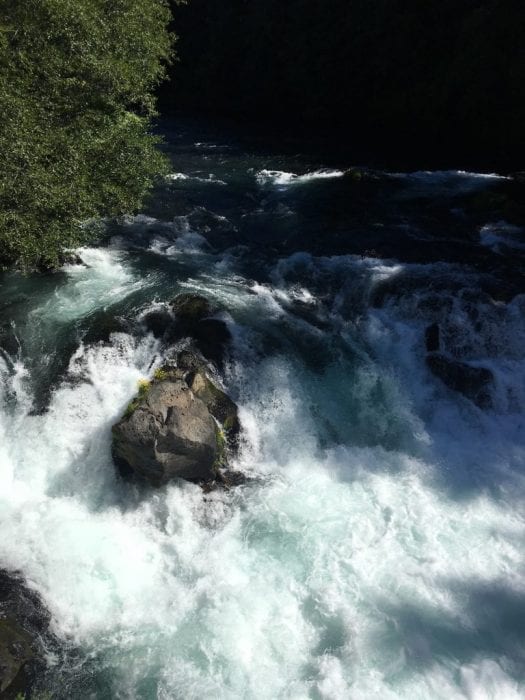Current work in wildlife, rivers, public lands, and climate
Press Releases
Forest Service turns its back on White Salmon River
The White Salmon River begins on the slopes of Mount Adams in Washington State and flows 44 miles joining the Columbia River near Underwood, WA. Congress designated the Lower White Salmon River from its confluence with Gilmer Creek to its confluence with Buck Creek as wild and scenic in 1986. A section of the upper river was designated in 2005. The five unique values of the White Salmon include whitewater boating, the river gorge, hydrology, resident fish and tribal cultural resources.
Though most of the river corridor is in private land ownership, the Forest Service is responsible for ensuring river values are protected and enhanced. A management plan developed in 1991 outlined desired conditions and actions for the lower river corridor, but the Forest Service has made little progress toward fulfilling this vision.
“A critical part of protecting the outstanding values of this river is for the Forest Service to expand public land acreage”, said Dennis White, Washington Chapter Lead for Columbia Gorge Audubon Society. “But in thirty years, very little land has been safeguarded for the river or future generations. It’s a disgrace to the agency and especially to the wild and scenic mark of distinction.”
Both Weyerhaeuser and SDS Lumber Company own parcels of land that could be sold or transferred to the Forest Service to meet the agency’s obligations under the Wild and Scenic Rivers Act, however the Forest Service has neglected to act. Instead Weyerhaeuser intends to sell its land for development and SDS Lumber Company continues logging, including near biologically unique settings like Spring Creek. Spring Creek was to be protected with a nature trail and picnic area. Other parts of the river management plan have also not been implemented, such as the need to develop specific plans to manage biological resources, to maintain or enhance habitats of management indicator species, to protect certain plant communities, and to conduct inventories of biological resources.

White Salmon River, Washington. Photo by WildEarth Guardians.
“The White Salmon River provides important habitat for salmon, steelhead and lamprey, and is a beloved whitewater kayaking and rafting river, especially after removal of Condit Dam,” said Marlies Wierenga, Pacific Northwest Conservation Manager for WildEarth Guardians. “That investment in dam removal and restoration will wash away if the Forest Service keeps its back turned on the needs of the river corridor.”
The Wild and Scenic Rivers Act was created by Congress in 1968 in recognition that some rivers of the United States are so outstanding that they should be preserved in their free-flowing condition. The Land and Water Conservation Fund was developed, in part, to provide a funding mechanism to purchase land for exactly this situation. Even today’s Congress sees the value in living rivers as it works to permanently authorize and fund the Land and Water Conservation Fund. If these protection and conservation tools are not deployed, then the White Salmon River’s recreation, cultural, geological, hydrological and fisheries outstanding values are at risk of being lost forever.